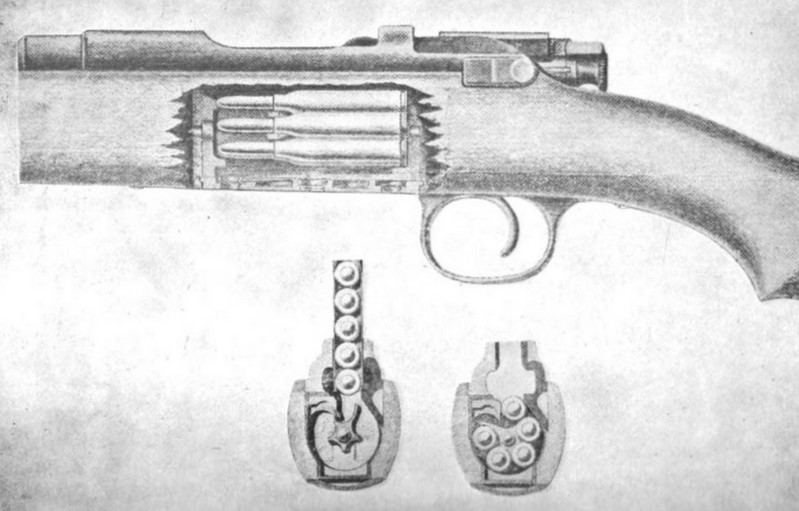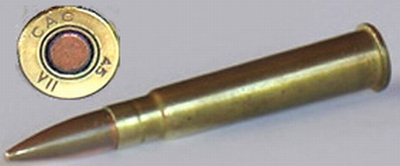|
Steyr SSG
The SSG 69 (''Scharfschützengewehr 69'', literally Sharpshooter Rifle 69) is a bolt-action sniper rifle produced by Steyr Mannlicher that is the standard sniper rifle for the Austrian Army. History Designed as a sniper system to replace the SSG 98k sniper rifle (modified and accurized surplus Karabiner 98k rifles) and adopted in 1969 (hence the designation), it was ahead of its time with the use of synthetics like the stock, trigger guard, and magazines and cold hammer-forged barrels for durability. Aside from being the Austrian Army's standard issue sniper rifle, it is also used by several law enforcement organizations. For its era and weight, it is extremely accurate and several international competitions have been won using an SSG-69 with accuracy being sub 0.15 mrad (0.5 moa). In 2015 Steyr ended production of the SSG 69. Design The receiver and barrel were designed to provide maximum strength for minimum weight. For this the bolt action uses three pairs of rear- ... [...More Info...] [...Related Items...] OR: [Wikipedia] [Google] [Baidu] |
Sniper Rifle
A sniper rifle is a high-precision, long range shooting, long-range rifle. Requirements include high accuracy, reliability, mobility, concealment, and optics, for anti-personnel weapon, anti-personnel, anti-materiel rifle, anti-materiel and surveillance uses by military snipers. The modern sniper rifle is a portable shoulder-fired rifle with either a bolt action or semi-automatic firearm, semi-automatic action (firearms), action, fitted with a telescopic sight for extreme accuracy and chambered for a high-ballistic performance Centerfire ammunition, centerfire cartridge (firearms), cartridge. History The Whitworth rifle was arguably the first long-range sniper rifle in the world. Designed in 1854 by Sir Joseph Whitworth, a prominent British engineer, it used barrels with hexagonal polygonal rifling, which meant that the projectile did not have to "bite" into the rifling grooves as with conventional rifling. His rifle was far more accurate than the Pattern 1853 Enfield, which ha ... [...More Info...] [...Related Items...] OR: [Wikipedia] [Google] [Baidu] |
Swarovski Optik
Swarovski Optik is a division of the Swarovski group of companies, manufacturing optical instruments. Its headquarters are located in Absam, Tyrol, Austria. History Wilhelm Swarovski, son of the original founder, was born in 1918. In 1935, with the help of his father, he developed a prism fabrication and grinding process that he used in the design of his first 6×30 binocular. In 1949 he founded SWAROVSKI OPTIK KG in Absam, Tyrol, to produce the Habicht 7×42 that it continues producing today. * 1935 First Swarovski binoculars, which was a 6×30 * 1949 Formation of Swarovski Optik * 1959 First Swarovski Optik rifle scope (4×32) * 1967 First Swarovski Optik extendable spotting scope (30×75) * 1974 Kahles was purchased by Swarovski Optik * 1977 Kahles became a branch of Swarovski Optik * 1989 Kahles Limited again became an independent company within the Swarovski group * 1991 First AT 80 telescope * 1993 First hunting rifle scope with reticle illumination * 1995 First rifle ... [...More Info...] [...Related Items...] OR: [Wikipedia] [Google] [Baidu] |
Mannlicher–Schönauer
The Mannlicher–Schönauer (sometimes Anglicized as "Mannlicher Schoenauer", Hellenized as Τυφέκιον/Όπλον Μάνλιχερ, ''Óplon/Tyfékion Mannlicher'') is a rotary-magazine bolt-action rifle produced by Steyr Mannlicher for the Greek Army in 1903 and later used in small numbers by the Austro-Hungarian Army. Post-war it was sold for civilian use. Design characteristics In the late 19th century, the classic Mannlicher designs for the Austro-Hungarian army like the M1886 were based on the en-bloc magazine, a straight-pull bolt mechanism, designed for obsolete large caliber cartridges. Following the introduction of smokeless powder in the Lebel rifle at the end of the century, the Steyr factory worked on new Mannlicher designs, using more effective modern cartridges. These were offered for the consideration of the Austro-Hungarian Army, for export to other armies and for to civilian market. The bolt action was originally designed by Louis Schlegelmilch (b ... [...More Info...] [...Related Items...] OR: [Wikipedia] [Google] [Baidu] |
Rotary Magazine
A magazine, often simply called a mag, is an ammunition storage and feeding device for a repeating firearm, either integral within the gun (internal/fixed magazine) or externally attached (detachable magazine). The magazine functions by holding several cartridges within itself and sequentially pushing each one into a position where it may be readily loaded into the barrel chamber by the firearm's moving action. The detachable magazine is sometimes colloquially referred to as a " clip", although this is technically inaccurate since a clip is actually an accessory device used to help load ammunition into a magazine or cylinder. Magazines come in many shapes and sizes, from integral tubular magazines on lever-action and pump-action rifles and shotguns, that may hold more than five rounds, to detachable box magazines and drum magazines for automatic rifles and light machine guns, that may hold more than fifty rounds. Various jurisdictions ban what they define as " high-capacity ... [...More Info...] [...Related Items...] OR: [Wikipedia] [Google] [Baidu] |
Bolt Action Rifle Feed
Bolt or bolts may refer to: Implements and technology ''Etymology: "to strike", see for example Thunderbolt'' * Bolt (fastener), a threaded shaft, used to clamp two components together * Bolt (climbing), an anchor point used in rock climbing * Bolt (firearms), a mechanism used in firearms * Crossbow bolt, ammunition used in a crossbow * Spy bolt, a clandestine storage device Arts, entertainment, and media * ''Bolt'' (1994 film), a drama starring Richard Grieco * ''Bolt'' (2008 film), a Disney animated film ** Bolt (Disney character), the main character of the film ** ''Bolt'' (video game), based on the film * Bolt (DC Comics), a fictional supervillains and superheroes from DC Comics * ''Bolt'' (1986), a book by Dick Francis * B.O.L.T, a Japanese girl group * ''The Bolt'' (Fragonard), a painting by Jean-Honoré Fragonard * ''The Bolt'' (Shostakovich), a three-act ballet by Dmitri Shostakovich * The Bolts, an American independent rock band Businesses and organizations * B ... [...More Info...] [...Related Items...] OR: [Wikipedia] [Google] [Baidu] |
ABS Plastic
Acrylonitrile butadiene styrene (ABS) (chemical formula (C8H8)''x''·(C4H6)''y''·(C3H3N)''z'' ) is a common thermoplastic polymer. Its glass transition temperature is approximately . ABS is amorphous and therefore has no true melting point. ABS is a terpolymer made by polymerizing styrene and acrylonitrile in the presence of polybutadiene. The proportions can vary from 15% to 35% acrylonitrile, 5% to 30% butadiene and 40% to 60% styrene. The result is a long chain of polybutadiene crisscrossed with shorter chains of poly(styrene-co-acrylonitrile). The nitrile groups from neighboring chains, being polar, attract each other and bind the chains together, making ABS stronger than pure polystyrene. The acrylonitrile also contributes chemical resistance, fatigue resistance, hardness, and rigidity, while increasing the heat deflection temperature. The styrene gives the plastic a shiny, impervious surface, as well as hardness, rigidity, and improved processing ease. The polybuta ... [...More Info...] [...Related Items...] OR: [Wikipedia] [Google] [Baidu] |
Cold Forming
In metallurgy, cold forming or cold working is any metalworking process in which metal is shaped below its recrystallization temperature, usually at the ambient temperature at or near room temperature. Such processes are contrasted with hot working techniques like hot rolling, forging, welding, etc. The same or similar terms are used in glassmaking for the equivalents; for example cut glass is made by "cold work", cutting or grinding a formed object. Cold forming techniques are usually classified into four major groups: squeezing, bending, drawing, and shearing. They generally have the advantage of being simpler to carry out than hot working techniques. Unlike hot working, cold working causes the crystal grains and inclusions to distort following the flow of the metal; which may cause work hardening and anisotropic material properties. Work hardening makes the metal harder, stiffer, and stronger, but less plastic, and may cause cracks of the piece. The possible u ... [...More Info...] [...Related Items...] OR: [Wikipedia] [Google] [Baidu] |
Lee–Enfield
The Lee–Enfield is a bolt-action, magazine-fed repeating rifle that served as the main firearm of the military forces of the British Empire and Commonwealth during the first half of the 20th century, and was the standard service rifle of the British Armed Forces from its official adoption in 1895 until 1957. A redesign of the Lee–Metford (adopted by the British Army in 1888), the Lee–Enfield superseded it and the earlier Martini–Henry and Martini–Enfield rifles. It featured a ten-round box magazine which was loaded with the .303 British cartridge manually from the top, either one round at a time or by means of five-round chargers. The Lee–Enfield was the standard-issue weapon to rifle companies of the British Army, colonial armies (such as India and parts of Africa), and other Commonwealth nations in both the First and Second World Wars (such as Australia, New Zealand, South Africa, and Canada). Although officially replaced in the United Kingdom with the L1A ... [...More Info...] [...Related Items...] OR: [Wikipedia] [Google] [Baidu] |
Gun Barrel
A gun barrel is a crucial part of gun-type weapons such as small arms, small firearms, artillery pieces, and air guns. It is the straight shooting tube, usually made of rigid high-strength metal, through which a contained rapid expansion of high-pressure gas(es) is used to propel a projectile out of the front end (muzzle (firearms), muzzle) at a high velocity. The hollow interior of the barrel is called the bore, and the diameter of the bore is called its calibre, usually measured in inches or millimetres. The first firearms were made at a time when metallurgy was not advanced enough to cast tubes capable of withstanding the explosive forces of early cannons, so the pipe (often built from staves of metal) needed to be braced periodically along its length for structural reinforcement, producing an appearance somewhat reminiscent of storage barrels being stacked together, hence the English name. History Gun barrels are usually made of some type of metal or Alloy, metal alloy. ... [...More Info...] [...Related Items...] OR: [Wikipedia] [Google] [Baidu] |
Receiver (firearms)
In firearms terminology and law, the firearm frame or receiver is the part of a firearm which integrates other components by providing housing (engineering), housing for internal action (firearms), action components such as the hammer (firearms), hammer, bolt (firearms), bolt or breechblock, firing pin and extractor (firearms), extractor, and has screw thread, threaded interfaces for externally attaching ("receiving") components such as the gun barrel, barrel, stock (firearms), stock, trigger (firearms), trigger mechanism and iron sights, iron/sight (device)#Optical sights, optical sights. Some firearm designs, such as the AR-15 platform, feature receivers that have 2 separate sub-assemblies called the upper receiver which houses the barrel/trunnion, bolt components etc and the lower receiver (Trigger Mechanism Housing in some cases) that holds the fire control group, pistol grip, selector, stock etc. The receiver is often made of forged, machined, or stamped steel or aluminium. Ap ... [...More Info...] [...Related Items...] OR: [Wikipedia] [Google] [Baidu] |
Minute And Second Of Arc
A minute of arc, arcminute (abbreviated as arcmin), arc minute, or minute arc, denoted by the symbol , is a unit of Angular unit, angular measurement equal to of a Degree (angle), degree. Since one degree is of a turn (geometry), turn, or complete rotation, one arcminute is of a turn. The nautical miles, nautical mile (nmi) was originally defined as the meridian arc, arc length of a minute of latitude on a spherical Earth, so the actual Earth's circumference is very near . A minute of arc is of a radian. A second of arc, arcsecond (abbreviated as arcsec), or arc second, denoted by the symbol , is a unit of Angular unit, angular measurement equal to of a minute of arc, of a degree, of a turn, and (about ) of a radian. These units originated in Babylonian astronomy as sexagesimal (base 60) subdivisions of the degree; they are used in fields that involve very small angles, such as astronomy, optometry, ophthalmology, optics, navigation, land surveying, and marksmanship. ... [...More Info...] [...Related Items...] OR: [Wikipedia] [Google] [Baidu] |




